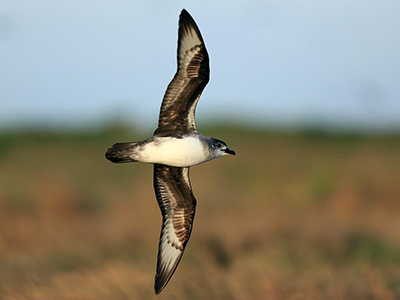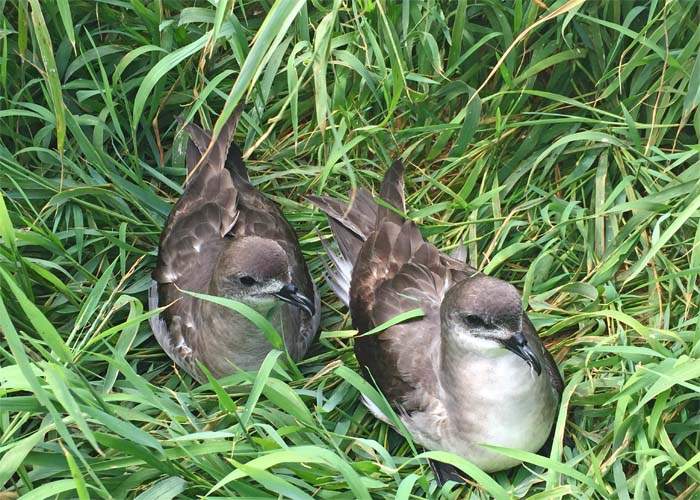Herald petrel
Creating a Queensland haven for breeding herald petrels
Herald petrels glide over vast oceans, coming ashore only to breed. Discover how we are working to re-establish their breeding habitat in far north Queensland.

Fast facts
Common name: Herald petrel
Scientific name: Pterodroma heraldica
Family: Procellariidae (Petrels and Shearwaters)
Status: Critically endangered
Habitat: The ocean and, during the breeding season, grassy coral cays and islands.
Species overview
Herald petrels are seabirds renowned for their elegant flight and remarkable oceanic journeys. Despite spending most of their lives at sea, these birds return to land to breed.
In Australia, herald petrels breed only on Raine Island, a small island approximately 620km northwest of Cairns. The island is the most important seabird rookery in the Great Barrier Reef World Heritage Area.
Raine Island is a culturally significant site for the Wuthathi People from Cape York and the Kemer Kemer Meriam Nation (Ugar, Mer, Erub) People from the eastern Torres Strait.
About 50 mature herald petrels have been recorded on Raine Island. Research continues to gather further information about this population, its genetic information and migratory behaviour.
Ecology and behaviour
The herald petrel plays a vital role in marine ecosystems, contributing to nutrient cycling and providing valuable indicators of ocean health.
Herald petrels glide over vast stretches of ocean searching for food, mainly fish, squid, and crustaceans.
The birds breed in winter, laying a single egg on the sand, hidden by grasses and a dense mat of shrubs. Climate change impacts, like sea level rise can flood low-lying nests. Increased sea surface temperatures can also impact food availability.
Characteristics
The herald petrel on Raine Island has:
- a body 34–39cm long
- a wingspan of 80–100cm
- grey-brown feathers above
- white feathers below with a grey collar
- dark underwings with pale bases to flight feathers forming a conspicuous broad stripe along the under surface of the wing
- an underwing leading edge that is white.
Threats
- Climate change, particularly sea level rise
- Severe weather events, such as storms and cyclones
- Feral predators (present on other islands, but not Raine Island).
What’s being done?
- As a scientific national park and protected area, Raine Island is inaccessible to the public and has strict biosecurity quarantine requirements.
- The Raine Island Recovery Project aims to protect and restore the island’s critical habitat to ensure the future of key marine species including the herald petrel as well as other seabirds and turtles.
The project is a collaboration between the Queensland and Australian governments; the Traditional Owners, the Wuthathi People from Cape York and the Meriam Nation (Ugar, Mer, Erub) People from the eastern Torres Strait; the Reef Authority, the Great Barrier Reef Foundation and BHP. - As part of the project, we undertake research to increase the resilience and viability of key species. This includes annual surveys to monitor and track the birds’ ecology and breeding success.
During the breeding season, all access is restricted to the breeding areas to avoid eggs being trampled and incubating birds being disturbed. We monitor seabird nests to keep them safe and move sand to create room for nesting.

Who is helping?
- CSIRO and University of Tasmania
We’re collaborating with CSIRO and University of Tasmania to profile the age structure of the birds and undertake genetic testing to determine if they are a distinct species. - Zoological Society of London.
In an Australian first, we’re collaborating with the Zoological Society of London to track the birds’ migratory behaviour when they leave Raine Island using small geo-locators. This baseline data will help determine what impacts climate change and sea level rise might have on the birds’ behaviour. There are also plans to use more sophisticated trackers in the future that will provide real-time information.
How you can help
- Make a donation to support Queensland threatened species protection and science and research-based initiatives.
- Find out more about how you can help support threatened species efforts.
More information